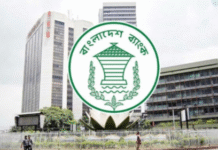
The government may ease the rules on the use of fabric imported duty-free to help local manufacturers shift to high-end apparels and boost export earnings as firms generate more waste while producing fancy items for international markets.
“If needed, we will amend the rules,” Md Jafar Uddin, commerce secretary, told The Daily Star yesterday.
“We will examine it, and if we can observe that it is necessary to increase our export, we will amend the rules soon.”
It came after garment manufacturers and exporters last week demanded the bond commissioner in Dhaka to increase the ratio of waste in garment manufacturing as the local apparel exporters are shifting to high-end items that need more waste of yarn and fabrics.
In 1998, the commerce ministry set the waste ratio for garments between 7 to 9 per cent. Even at that time, local manufacturers and exporters had said that the limit was far too little considering the amount of material used for a finished product.
The government is involved in dictating the waste ratio as most fabrics and yarns used by the sector are imported duty-free under a bonded facility.
It imposes additional taxes on garment makers who end up generating more waste than what was permitted while exporters often face harassment from customs, they said.
Customs offices sometimes delay releasing goods from ports because of a mismatch in the amount of fabric imported and its consumption for making finished apparel goods for export under bond licences.
About 40 per cent of all garment items shipped from Bangladesh are high-end products.
The local garment industry is gradually shifting away from basic and semi-high-end products, and at this time, manufacturers find it difficult to maintain the existing limit on waste.
This is because high-end products are subject to three important facets of the manufacturing process: sampling, development and approval from buyers, they added.
When it comes to high-end garment making, the volume of fabric used is less, but the value is high.
As a result, these products require more fabric compared to basic garment items since apparel makers need to provide small details in their samples.
Sampling is one of the key elements of the pre-production process. It includes details like colour specifications, composition, description, quantity, and details of embroidery for the buyer.
Experts have agreed with the demand of the exporters.
“The demand made by local garment manufacturers is not invalid. The waste level has increased over the years due to complexities in production,” said Md Abul Kashem, vice-chancellor of the Bangladesh University of Textiles.
The amount of waste currently generated by apparel makers seems very high when considering all the variables. However, it is, in truth, not as bad as it seems.
For instance, wastage occurs at every facet of the manufacturing process. This includes procuring yarn, dyeing fabrics, cutting, sewing, grading, finishing and packing.
From start to finish, about 5 or 9 per cent of the materials used in each step is wasted.
“This means that if the total waste is added together, the real percentage of waste generated might even cross 30 per cent,” Kashem said.
Many people find it unbelievable that 30 per cent of the materials used is wasted, but in actuality, it is not quite that astounding if calculated separately.
The percentage of waste generated varies from factory to factory because of the use of modern technologies, skilled workforce, efficient use of raw materials and better quality control, he added.
Local manufacturers and exporters yesterday approached the Customs Bond Commissionerate (CBC), Dhaka to demand an increase in the waste ratio. CBC Dhaka is a field office under the National Board of Revenue.
“Relaxing these rules is not CBC Dhaka’s issue. Instead, the related ministries can decide based on revisions,” said Md Shawkat Hossain, commissioner of the CBC.
The CBC Dhaka will share its views with regard to increasing the waste limit.
The permitted waste ratio for fabrics should be updated in view of the practical situation as buyers seek products of various designs, Hossain added.
A Matin Chowdhury, a former president of the Bangladesh Textile Mills Association, said nearly 40 per cent waste was found in a test involving some factories with the best production practices. This was done so that the actual percentage could be determined.
“The percentage of waste increased because local garment manufacturers have been shifting to high-end garment items so that they can get better prices from retailers and brands,” he said.
The Bangladesh University of Textiles could carry out a study to determine the actual waste, he added.
KM Rezaul Hasanat, chairman and CEO of Viyellatex Group, a leading garment exporter, said composite mills usually end up wasting around 40 per cent of its materials.
For instance, from yarn to fabric (knitting, dyeing and finishing) 12-15 per cent waste was generated.
The amount was 15-18 per cent for pattern designs, 5-8 per cent during the print, embroidery and wash phase and 2-3 per cent during sewing, he said.
At the meeting with bond officials last week, garment exporters showed that a prominent local manufacturer’s waste was calculated at 40.24 per cent between 2015 and 2018.
Visible waste accounted for 8.43 per cent, invisible waste 9.72 per cent, cutting waste 15.38 per cent, cut panel waste 5.66 per cent and rejected garment waste 4.95 per cent, according to a document submitted to the bond office by garment exporters.









